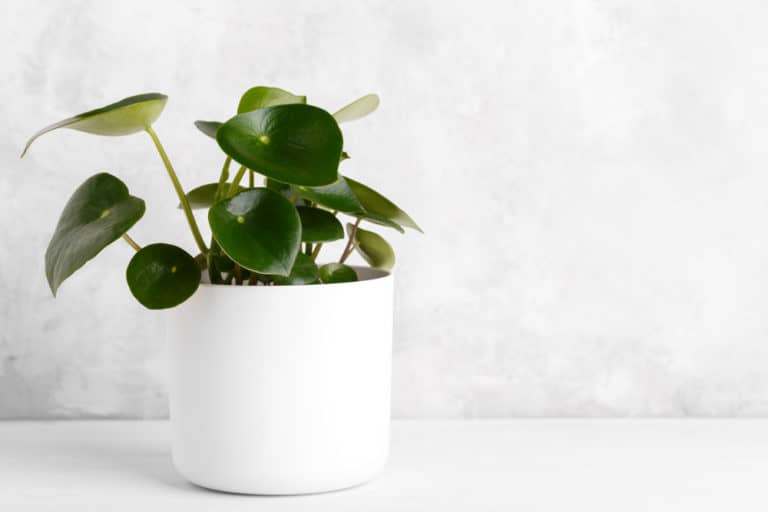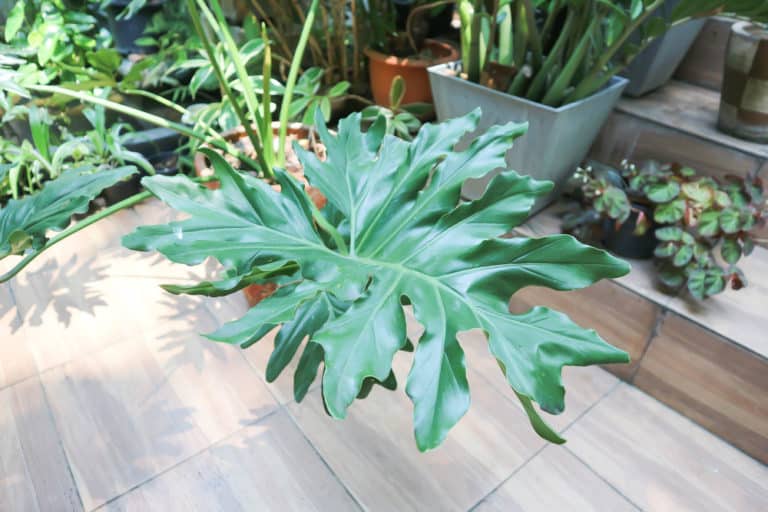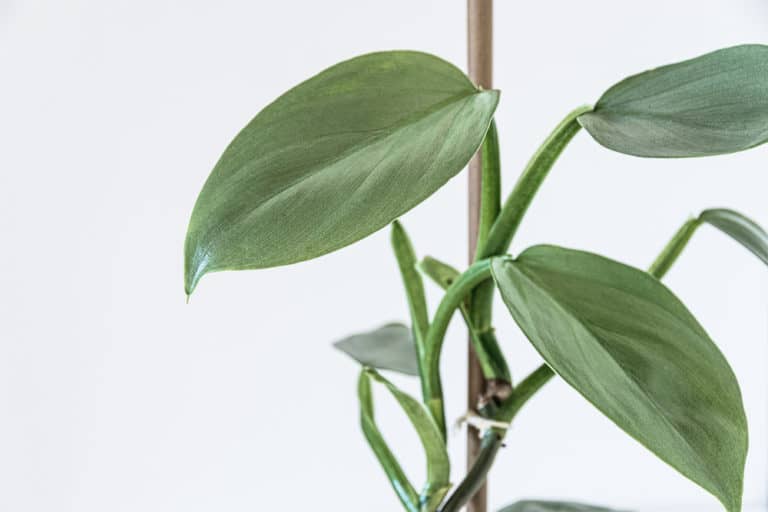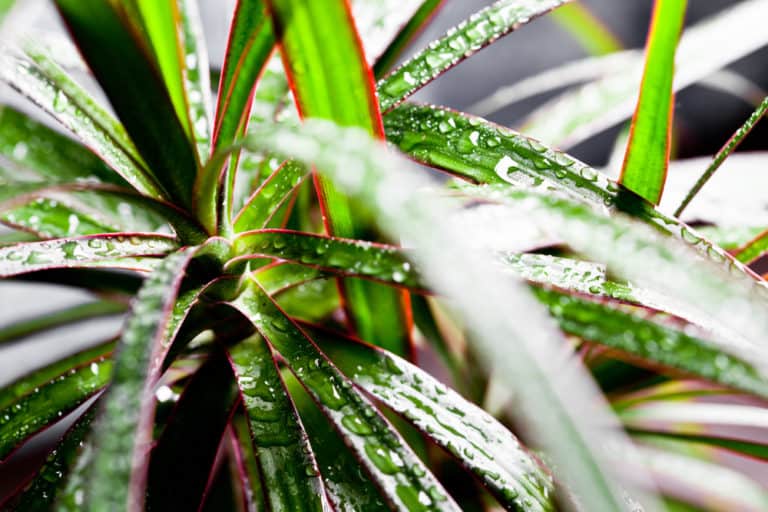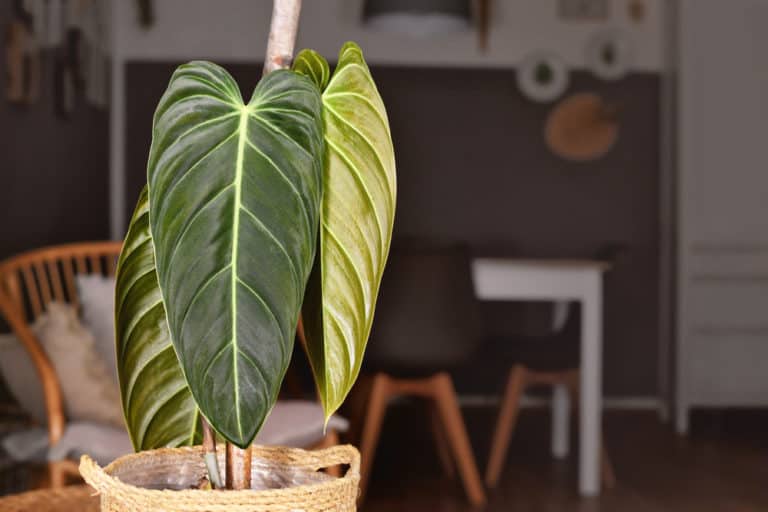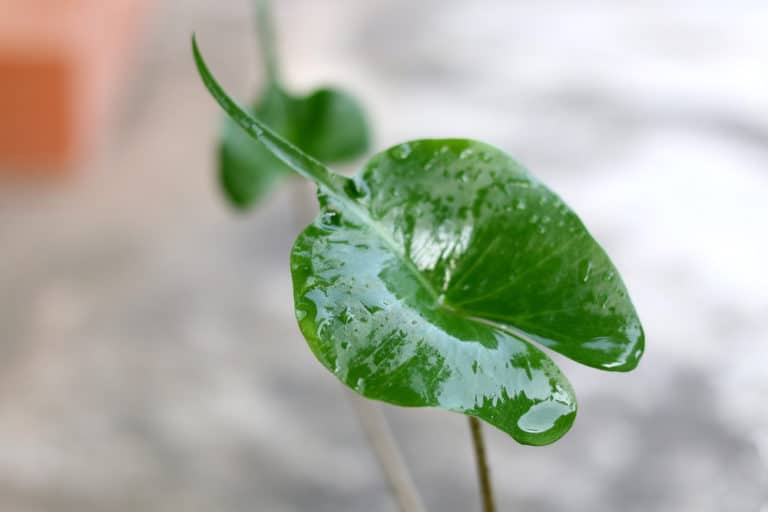Crassula Perforata ‘String of Buttons’ Care Guide (2024)

Most succulents we encounter are slow-growing. However, there are a few exceptions and this Crassula perforata is among them. This species grows really fast and is definitely an attractive one.
Are you ready to add this to your present houseplant collection? Let’s start with a quick overview of this succulent.
Plant Profile
Common Name: String of buttons, Necklace Vine, Stacked Crassula
Scientific Name: Crassula perforata
Type: Succulent
Origin: South Africa
Habitat: It grows amongst stones, rocky soils located at high elevations.
Size: 1 to 2 ft tall (30-60 cm) and 2 to 3 ft wide (60-90 cm)
Toxicity: Not determined
Colors: Gray-green leaves tinted with pink color on its edge
Blooms: Clusters of white and yellow flowers during spring
Plant Care
Light: Full to partial sun
Watering: Low, soak, and dry method
Temperature: 65-70°F (18-21°C)
USDA Zone: USDA hardiness zones 9-11
Air humidity: Low
Soil pH: Not particular to a pH range
Fertilizing: Low
Propagation: Stem, Leaf Cuttings, Offshoots
Re-Potting: Repot yearly or as necessary
Pruning: Removal of dead and aged leaves
What’s Unique About Crassula Perforata?
One look at this String of buttons plant and you’ll be mesmerized. Like most of the succulents we know, this plant has its own unique features. From its leaves to its flowers, you’d know that this is a gem. One that’s definitely worth your penny.
Other than String of button, another known Crassula perforata common name is Necklace vine. Don’t be surprised if you hear others call the plant this way. It’s native to South Africa, naturally found amongst stones and rocky soils located at high elevations.
Today, this succulent is a popular houseplant. There are even other variations such as the Crassula perforata variegata.
Appearance
There is something peculiar with the Crassula perforata appearance. That uniqueness will invite you to stare and adore its beauty for a while. The plant has a stacked appearance. While it has an erect position, other offshoots could sprawl on the side as the plant gets dense. It’s quite a pleasant view to see.
Foliage
Succulents are mostly known for their beautiful and eccentric leaves. In the same way, the foliage of Crassula perforata is its most interesting feature. Each leaf has a triangular shape and it is attached to the stem in a spiraling manner. Because of their close proximity, the stem looks like it has a stack of fleshy leaves.
The foliage has a grey-green color. On its edges, a tinge of pink or red outline is also visible. Such a combination of contrasting hues make it more catchy.
The Crassula perforata is almost similar to the buddha temple plant. So, don’t confuse them with each other.
Flowering
Spring is the time for Crassula perforata flowering to occur. It’s a pleasant time for you to enjoy the beauty of its blooms. They form clusters of white and yellow flowers. When it appears, the foliage would look like it has crowns on its head. The flowers make the succulent even more attractive.
Make sure to bring out your camera to capture the Crassula perforata blooming. These small, star-shaped flowers appear only in season. If you miss it out, you’d have to wait for the next spring time. So, make it a point to enjoy the blooms while it lasts.
Size and Growth
The string of buttons succulent has a clumping growth habit. Initially, the plant would grow in an upright direction. As it produces more offshoots, the base gets clumped with new baby succulents. Eventually, they sprawl over the soil surface leading the offshoots to bend over and outside the pot.
The size of Crassula perforata can reach up to 1 to 2 ft tall (30-60 cm) and 2 to 3 ft wide (60-90 cm). They are relatively bigger than other succulent species. If left on its own, this Crassula could easily outgrow its pot. Remember that this plant grows really fast.
Fragrance
Although unique and stunning in appearance, there is nothing much to expect when it comes to Crassula perforata fragrance. Neither the foliage nor the flowers produce any remarkable scent. Nevertheless, this can be an advantage to those who have allergic reactions to strong odor like rhinitis.
Despite the lack of fragrant smell, your Crassula perforata plant is already enough on its own. If you are dedicated to care for this plant, it will surely reward you with beautiful, lush foliage and pretty flowers. They are more than enough to add life and attraction in your home. So, don’t be disappointed.
Toxicity
Information about Crassula perforata toxicity is quite vague. The American Society for the Prevention of Cruelty to Animals (ASPCA) does not mention whether it has toxic or non-toxic properties. However, several species belonging to the same Crassula genus are labelled as toxic to pets and humans.
From here, we can assume that this species might be toxic.
For Humans
If you’re planning on growing Crassula perforata at home, make sure to be extra cautious. Since information on its toxicity is limited, we cannot fully know whether this plant is safe or dangerous. It’s better to be on the safe side and assume that the plant can bring potential harm.
Do you have kids at home? We advise that you place your Crassula perforata succulent away from their reach. Also, don’t forget to wear protective gloves every time you handle this plant. Do this especially if you’re going to cut off the stems and leaves. Avoid direct contact as much as possible.
For Pets
Make sure to give equal protection to your fur babies at home. It’s better to keep your crassula string of buttons away from your pets. This way, they won’t be tempted to play with those stacked leaves. You’ll also prevent them from ingesting any part of your crassula.
We advise that you group all toxic and non-toxic plants together. Put a “caution” label on dangerous plants so you don’t forget. Provide a separate place for them. It would also help if they’re situated a little higher than the other plants. If you can hang your Crassula perforata plants, better put them that way.
Suggested Uses
What better way to display succulents than to keep them as houseplants? There are various ways to grow Crassula perforata. You can pot them in fancy containers. Or, you may place them in hanging planters to allow the offshoots to bend down. Either way, your succulent will do well.
You may also use this succulent as an additional element your terrarium set up. A dish garden will also look a lot better with this on. Once you’ve mastered propagating the offshoots, you could even make an income out of it. For sure, many folks would be interested to buy a pot or two of this peculiar succulent species.
Crassula Perforata Care
It’s a huge blessing that maintenance and care for Crassula perforata is rather easy. This is great news not only for newbie gardeners but even for the seasoned ones. It means that you wouldn’t have much headaches and heartaches. So, you can stop worrying now.
Following are just the basic things to remember when growing your own Crassula.
Light
Talking about the Crassula perforata light requirements gives us much delight. Why? Because this plant is pretty adaptive to varying light conditions whether it is full sun or partial shade. Thanks to its native environment, this succulent has been trained not to be very picky.
As such, you have the option to place your Crassula outdoors or indoors. If outdoors, make sure it receives 4 to 6 hours of filtered sunlight. If indoors, place it in an east facing window so it receives plenty of indirect light. You can adjust light exposure if the leaves are showing signs of stress.
Watering
Watering of Crassula perforata can be tricky at times. But if you’ve been used to caring for succulents, nothing is new. The soak and dry method is still the best practice there is. Always remember that your plant doesn’t need regular watering. It’ll survive even with less water available.
As best practice, water the plant only when the soil is dry. You can let a week or two pass without watering and that’s okay. But once dry, make sure to drench it fully with water until saturated. Let it drain and put it back in its location. In colder months, watering isn’t almost needed.
Temperature
As a native of South Africa, this plant is used to an environment having warm and sunny days as well as cool nights. In that case, you should try to imitate this condition as much as possible. This plays a critical part in the string of buttons succulent care.
The ideal Crassula perforata temperature ranges from 65 to 70°F (18 to 21°C). Mild frost and freezing can be tolerable a number of times. But make sure that exposure to such conditions isn’t that long. If you are living in areas with USDA hardiness zones 9-11, then, your crassula succulent will surely thrive.
Air Humidity
Do you have low humidity in your current location? That’s not a problem for your Crassula perforata. We’ve mentioned earlier that this succulent is well-adapted to challenging conditions. And that includes the lack of moisture in the air. In fact, your plant would even love this specific condition as it’s not a fan of a wet environment.
The best Crassula perforata humidity should be at low to average level. Avoid places with high humidity or else, they’ll easily develop rotting. It’s important that you keep the succulent dry most of the time. This will protect the plant from developing diseases.
Soil
Always use a well-draining and disease-free potting medium for your succulents. You can easily buy a sterilized cacti and succulents mix online. This will help save your time because these mixes are all ready to use.
If not available, you can always create your own Crassula perforata soil mix. You can combine pumice, bark, sand and a little garden soil. Mix them well until all amendments are well-distributed. The medium should have a light and porous feel.
Luckily, you don’t have to maintain a certain soil pH range. Your crassula plant will adapt with no trouble to the soil’s existing pH.
Fertilizing
Because this succulent isn’t a fussy one, it wouldn’t demand regular fertilization either. It will efficiently utilize whatever available nutrients there are in the soil. Don’t worry because this will not significantly affect the Crassula perforata growth rate. They’d still flourish even when the soil isn’t rich in nutrients.
What we recommend is that you fertilize ONLY when it’s really necessary. If the plant remains stunted for a very long time, then, you could add balanced fertilizer to give it a boost. Just make sure that you dilute the fertilizer with water to lower its concentration. This will prevent inflicting damage on the roots due to fertilizer burns.
Propagation
There are three methods to choose from when it comes to propagation of Crassula perforata. You can use leaf and stem cuttings or separate the offshoots of the plant.
In cuttings, you have to choose healthy looking leaves or stems and detach them. Allow the wounded part to be callous for a few days. Then, lay them down on a moist potting mix. Spray with water and let the calloused end develop its own roots.
If available, you can detach offshoots from the mother succulent. Pot them separately and they’ll grow as a new plant. In rare occasions, Crassula perforata seeds can also be used in propagation.
Re-Potting
Repotting Crassula perforata should be done frequently. Remember this one is a fast grower. It can produce numerous offshoots in a year’s time. Thus, it will easily outgrow its current pot. Once you observe this happening, proceed with repotting your succulent.
Once you remove the plant from its pot, make sure to check the roots. Trim down diseased and aged portions before you plant it back to a larger container. Use a fresh potting medium that has good drainage.
This is also the best time to remove the excess offshoots around the plant so you could use them in propagation.
Pruning
In order to maintain the Crassula perforata shape, it’s better to do pruning from time to time. Long, bent, old, and weak stems can be pruned out using clean shears. This will help thin out the dense foliage of the succulent. It will also allow new and young shoots to flourish.
Pruning Crassula perforata also involves the removal of aged and dead leaves as well as the spent flowers and their remaining stalks. Mainly the purpose is to maintain its aesthetic purpose. But apart from that, pruning also helps the plant remain healthy. It encourages better light penetration and air circulation.
Crassula Perforata Common Problems
Good thing because there are not many Crassula perforata problems that you’ll encounter. This succulent is generally an easy-to-please one. And it can well-adapt to challenging environmental conditions.
There are times, however, that it can get susceptible. To be ready, it’s best to know what pests and diseases to expect.
Pests
Aphids, mealybugs and vine weevils are the common Crassula perforata pests that you need to watch out for. Tiny organisms such as aphids and mealybugs can multiply in your succulent without getting noticed. If you aren’t vigilant enough, they can inflict serious damage on the plant.
Vine weevils, on the other hand, are more destructive. They love eating the succulent stems and leaves of the plant. They can easily leave noticeable notches. Remove the insects the moment you spot them. Also, check the roots for the presence of grubs. Watch out during spring and summer because this is the time when adult weevils are most active.
Diseases
Root rot is the result of a number of Crassula perforata diseases that developed from overwatering and excess moisture. Pathogens like fungi and bacteria are most active when the environment is constantly damp. This gives them the chance to multiply and inflict damage on the plant.
Unsterilized soil can also be the source of a disease. Disease-causing organisms can stay alive in soil for years. They’d only activate when the condition gets favorable for them. You can treat diseased plants with fungicide or bactericide, depending on what causes the trouble.
It’s always important to maintain proper handling and hygiene in doing cultural management in plants.
Growing Problems
With proper care and maintenance, you are less likely to encounter serious problems while growing the String of buttons. Just make sure to avoid overwatering this succulent. This is the only thing we need to be very cautious of. If you’re faithful to follow all the tips we’ve mentioned, your plant will surely live and thrive.
The catch is that you have to provide your Crassula perforata with the best growing conditions as much as you can. If not, aim that it would be close to that of the plant’s requirements. Avoid inflicting stress to the plant at all possible costs.
FAQ
How do you care for Crassula perforata?
Crassula perforata care is rather simple. Plenty of light, less frequent watering, warm temperature and a dry environment are what it basically needs to live.
Why is my Crassula perforata plant dying?
This depends on what factors induce the most stress on the plant. It could be due to overwatering, underwatering, lack of light or excess exposure to it.
Is Crassula perforata easy to grow?
As a beginner-friendly plant, the Crassula perforata will surely make your gardening journey an easy one.It is best grown indoors and in decorative pots.
How do you propagate Crassula perforata?
Thankfully, this Crassula species produces pups or offshoots. You just need to separate those pups and plant them individually. Stem and leaf cuttings will also do.
Is Crassula perforata toxic to dogs?
Information regarding Crassula perforata’s toxicity is limited. APSCA doesn’t list this species either in toxic or non-toxic plants. We suggest that you handle this with extra caution.

